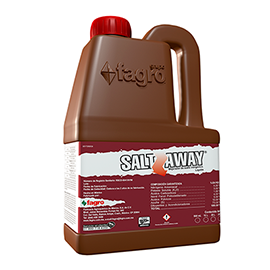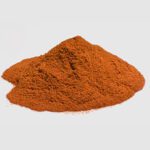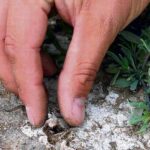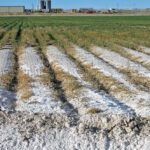Sodic saline soils
It is important to differentiate between saline and sodic soils. Saline soils are those that contain significant amounts of salts more soluble than gypsum, which interferes with the growth of most sensitive crops and plants. Salinity is measured by Electrical Conductivity (EC). In contrast, sodium soils originate when the monovalent sodium ion displaces other bases from the adsorption complex in the micellar solution and is fixed to this surface structure, at a level of concurrence that exceeds 15% between the exchangeable cations. A soil is considered sodic when the PSI (Exchange Sodium Percentage) is >15% or the SAR (Sodium Absorption Ratio, which is the ratio between the monovalent cation Na+ and the bivalent cations Ca2+ and Mg2+) of the soil solution. soil is >13%. It is very common to find soils where salinity is present together with sodicity, called Sodic Saline soils.
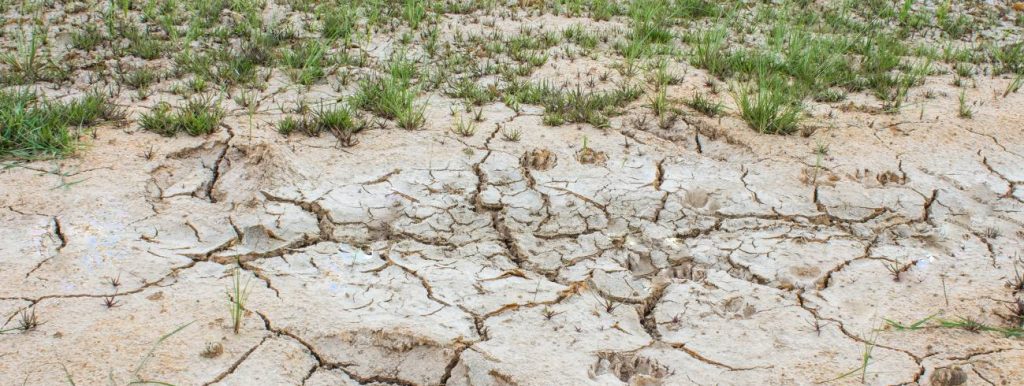
There are sodic soils with a lower pH and without dark coloration. Many of the soils have a high salinity, these soils have a better physical condition than non-saline-sodic soils, due to their high content of soluble salt, they keep the clay minerals flocculated and the edaphic or soil structure stable.
Salt-affected soils can cause a variety of problems. The high salt content causes osmotic stress that causes plant cells to concentrate solutes, allowing water to move to the roots. This absorbs energy from the plant and has the potential to reduce growth. The high level of salinity in the root zone can dramatically reduce crop production. While saline soils have one.

Crops that are salt tolerant can grow in soils with higher salinity, but some crops are sensitive to EC values below this limit amount. For a list of the salt tolerance averages of some crops.
A high level of salinity is usually the combined result of salt loading from parent soil material and poor drainage. Salts accumulate over time if the water cannot be filtered out of the soil profile. Similarly, saline soils can form where a high water table occurs along with irrigation water that is high in salt content, and even where irrigation water contains moderate to high levels of salt.
Excess sodium in sodic soils is toxic to some crops, particularly trees that are exposed to this element for several years.
Inorganic soil improver. Liquid
SALT AWAY, as, ac. carboxylic and fulvic, which, when in contact with soil particles, associate by trapping calcium, magnesium and sodium cations; highly concentrated elements in saline soils, solubilizing them and filtering the excesses out of the root development area, avoiding crop toxicity.
In soils with the presence of sodium, its structure is affected, showing difficulty in conducting water through the pores, which is why the product has in its formulation, tensoactive agents that facilitate the normal infiltration of water into the soil.
The immediate effect of SALT AWAY ingredients such as sulfur-potassium and sulfur-ammonium as soil improvers is achieved from the moment the product is applied to the irrigation water. The continuous use of SALT AWAY, allows to improve the productive capacity of agricultural soils.
 AgronoBlog – Agriculture Blog
AgronoBlog – Agriculture Blog 